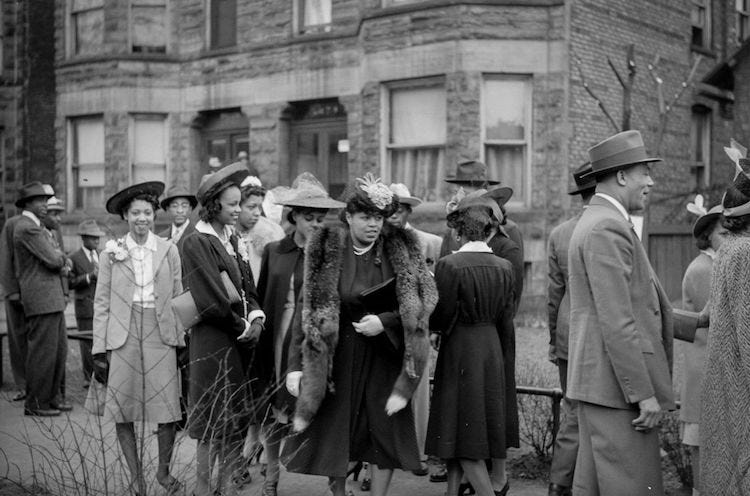Measuring the Winds of Chicago’s Great Black Migration
I’ve long known about my paternal grandparents and their migration from Union Springs, Alabama to Chicago back in the 40s or 50s. But it wasn’t until recently that I began to research the deep historical significance of these times.
Known as the Great Migration, this movement of Black Americans from the South to urban centers in the North, transformed Chicago and other northern cities like Detroit, New York, and Pittsburgh from around 1916 to 1970.
On the heels of World War I, this Great Migration led to an exponential population boom in Chicago to upwards of 280,000 residents by 1940. This fueled what sociologists St. Clair Drake and Horace Cayton called the “Black Metropolis” as chronicled in their book by a similar name.
The next surge in migration that occurred during World War II exceeded the first, nearly quadrupling Chicago’s Black population to beyond 1.1 million by 1970.
In his book “Land of Hope: Chicago, Black Southerners, and the Great Migration,” James R. Grossman, an associate faculty member in the history department at the University of Chicago and Executive Director of the American Historical Association explores the story of how and why Black southerners in deciding to migrate from the South adapted to Chicago’s urban industrial culture.
By giving voice to the lived experience of these transplants, Grossman eloquently navigates the reader through a series of perspectives using a cornucopia of primary sources ranging from newspaper documents to migrant letters to government records.
He shows how Black Southerners marveled at Chicago’s repute as a “promise land” rich with immense possibilities. They learned about this from the highly influential Chicago Defender newspaper, letters from migrants that had already relocated, railway workers, and labor agents.
While Chicago offered freedom from legally sanctioned race discrimination, many employers turned away Black Americans who sought employment at their factory gates. Viewed as unable to deliver regular, highly disciplined work, they were virtually shut out of the labor market.
Few opportunities were offered to Black transplants until World War I. With owners of northern railroads now facing severe wartime labor shortages, the Great Migration in and around 1916 soon began generating its own momentum.
During this period nearly a half million Black Americans left the South for a chance at a new life in Chicago and elsewhere. Factories began opening their doors to Black workers, providing eager Black southerners with the opportunity to become major players in the rapidly emerging industrial economy.
While the trajectory of job opportunities for Black women was a bit more measured, domestic work in the “Windy City” did yield higher wages along with more personal freedom than in the South.
The next surge in migration that occurred during World War II exceeded the first, nearly quadrupling Chicago’s Black population to beyond 1.1 million by 1970. This unfortunately resulted in an acute deficit of adequate housing in Chicago’s segregated Black Belt resulting in a tenuous scenario on Chicago’s South and West sides.
This migratory flow experienced a series of fluctuations for decades to come, culminating in the 1960s when Chicago’s infamous packing houses began to close and steel mills experienced a decline. As Grossman chronicles in his book:
…“dreams embodied in the Great Migration eventually collapsed under the weight of continued oppression and the failure of industrial capitalism to distribute the prosperity as broadly as the migrants had expected.”
In the end, the Great Migration played a pivotal role in America History in the reshaping of Black America, urban cities and the built environment, and the South. It also has resulted in a strong structure for Chicago’s black political power, business, and union growth. The strong influence on the city’s Black arts and music scene, cuisine, churches, and civic organizations that interconnected the city with its roots in the South prevails to this day.



